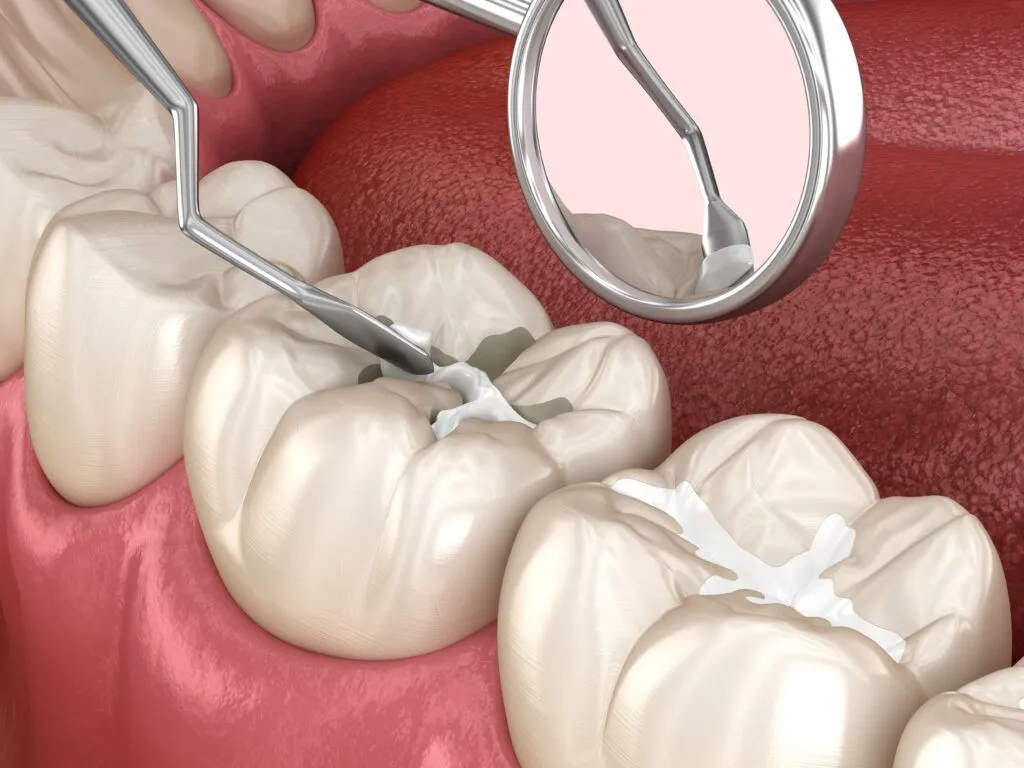Your cart is currently empty!
When it comes to restoring a tooth damaged by decay, dental fillings are one of the most common solutions. However, not all fillings are created equal. Various materials are used, each with its own advantages and disadvantages. Understanding these differences can help you make an informed decision about your dental care. Let’s explore the most common types of dental fillings available today.
1. Amalgam Fillings
Overview: Amalgam fillings, often referred to as “silver fillings,” are made from a mixture of metals, including mercury, silver, tin, and copper.
Pros:
- Durability: Highly durable and can withstand significant chewing forces.
- Cost-Effective: Generally less expensive than other filling materials.
- Longevity: Can last 10 to 15 years or more with proper care.
Cons:
- Aesthetics: Noticeable due to their dark color, making them less ideal for visible teeth.
- Mercury Content: Contains mercury, which raises health concerns for some, though the ADA considers them safe for most patients.
2. Composite Resin Fillings
Overview: Composite fillings are made of a tooth-colored resin that blends seamlessly with your natural teeth.
Pros:
- Aesthetics: Provides a natural appearance, ideal for front teeth or visible areas.
- Bonding: Adheres directly to the tooth structure, providing additional support.
- Versatility: Can repair chipped, broken, or worn teeth.
Cons:
- Durability: Less resistant to wear compared to amalgam, especially for large cavities.
- Cost: Slightly more expensive than amalgam fillings.
- Longevity: Typically lasts 5 to 7 years before needing replacement.
3. Ceramic Fillings
Overview: Made from porcelain, ceramic fillings are both durable and aesthetically pleasing.
Pros:
- Aesthetics: Mimics the natural color and translucency of teeth.
- Stain Resistance: More resistant to staining than composite resin.
- Biocompatibility: Metal-free, suitable for those with metal allergies.
Cons:
- Cost: More expensive due to the material and fabrication process.
- Brittleness: Can be more brittle and may require a larger size to prevent breakage.
4. Gold Fillings
Overview: Gold fillings are crafted from gold alloy and are known for their exceptional durability.
Pros:
- Durability: Can last 15 years or longer with proper care.
- Biocompatibility: Non-corrosive and gentle on surrounding teeth.
Cons:
- Cost: One of the most expensive filling options.
- Aesthetics: Noticeable color doesn’t match natural teeth.
- Multiple Visits: Usually requires more than one appointment.
5. Glass Ionomer Fillings
Overview: Composed of acrylic and a specific type of glass material, these fillings release fluoride over time.
Pros:
- Fluoride Release: Helps prevent further tooth decay.
- Ideal for Children: Commonly used for cavities below the gumline and in young children.
Cons:
- Durability: Less robust, more suitable for small fillings or non-biting surfaces.
- Aesthetics: Less natural-looking compared to composite fillings.
6. Temporary Fillings
Overview: Used as a short-term solution, temporary fillings protect the tooth until a permanent filling is placed.
Pros:
- Immediate Protection: Shields the tooth after procedures like root canals.
- Convenience: Useful when multiple dental visits are required.
Cons:
- Longevity: Designed to last only a few weeks.
- Not Suitable for Long-Term Use: Needs to be replaced with a permanent filling.
Choosing the Right Filling for You
Selecting the appropriate filling material involves considering several factors:
- Location of the Tooth: Front teeth may benefit from tooth-colored materials for aesthetic reasons.
- Extent of Decay: Larger cavities might require stronger materials like amalgam or gold.
- Allergies and Sensitivities: Metal-free options are available for those with allergies.
- Budget: Costs can vary significantly; insurance coverage may influence your choice.
- Longevity vs. Aesthetics: Balancing how long the filling will last with how it looks.
Understanding the different types of dental fillings empowers you to make informed decisions about your oral health. Each material offers unique benefits and potential drawbacks. Discussing these options with your dentist will help you choose the filling that best suits your needs, ensuring both the health and beauty of your smile.
Remember: Regular dental check-ups and good oral hygiene practices are essential for the longevity of any dental filling.

